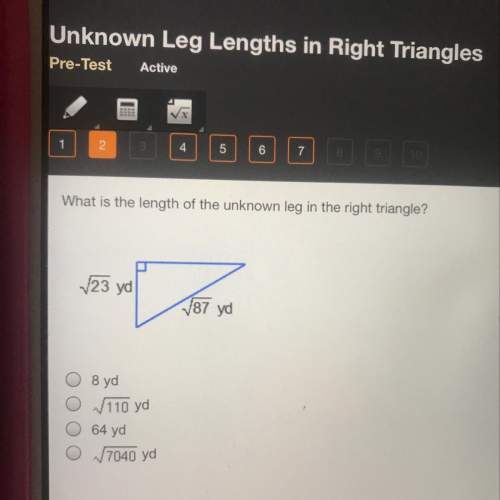
Mathematics, 01.12.2019 06:31 eli9595
You have four $1 bills, two $5 bills, five $10 bills, and five $20 bills in your wallet. you select a bill at random. without replacing the bill, you choose a second bill. find p($1,then $10).

Answers: 1


Another question on Mathematics


Mathematics, 21.06.2019 14:30
Find the value of tan theta if sin theta = 12/13 and theta is in quadrant 2
Answers: 1

Mathematics, 21.06.2019 21:20
Drag each expression to the correct location on the solution. not all expressions will be used. consider the polynomial 8x + 2x2 - 20x - 5. factor by grouping to write the polynomial in factored form.
Answers: 1

Mathematics, 21.06.2019 21:30
Create a graph for the demand for starfish using the following data table: quantity/price of starfish quantity (x axis) of starfish in dozens price (y axis) of starfish per dozen 0 8 2 6 3 5 5 2 7 1 9 0 is the relationship between the price of starfish and the quantity demanded inverse or direct? why? how many dozens of starfish are demanded at a price of five? calculate the slope of the line between the prices of 6 (quantity of 2) and 1 (quantity of 7) per dozen. describe the line when there is a direct relationship between price and quantity.
Answers: 3
You know the right answer?
You have four $1 bills, two $5 bills, five $10 bills, and five $20 bills in your wallet. you select...
Questions






History, 27.03.2021 01:00

Mathematics, 27.03.2021 01:00

Mathematics, 27.03.2021 01:00


History, 27.03.2021 01:00


History, 27.03.2021 01:00

History, 27.03.2021 01:00


Mathematics, 27.03.2021 01:00


Chemistry, 27.03.2021 01:00


English, 27.03.2021 01:00




